RAGE POSTMORTEM
I’m James, an indie game developer (@cbGameDev). I make bigger games with my friends, in a studio I helped start up and make smaller games on my own in my spare time! I enjoy the challenge of working in a team on big scale games and use the smaller games to learn, have some fun and stay motivated through shorter development cycles. This is a postmortem about making “Rage”, I thought it could be interesting to others and useful for myself to reflect on the process.
View the games itch.io page here!
WHAT IS RAGE?
Rage is an 80s style beat-em-up, inspired by Street Fighter, Marvel Vs Capcom and Mortal Kombat. It has a single-player game mode in which you play against AI, unlocking new playable characters as well as a Player Vs Player game mode. The characters in the game are made up of me and my mates.
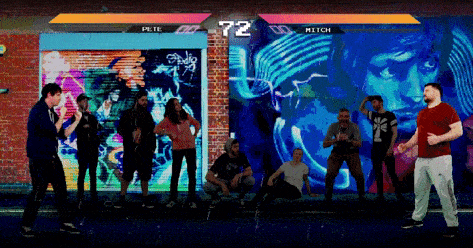
WHY MAKE THIS GAME?
Before I started Rage I knew little about the mechanics of fighting games. At that time we had started playing a lot of Marvel Vs Capcom in the office and I was interested in how the game seemed simple on the surface but was hiding lots of complexities behind the scenes. I thought it would be a good challenge to try to make my own fighting game and I wanted to have me and my mates as the characters in it. Below is my initial rough idea:
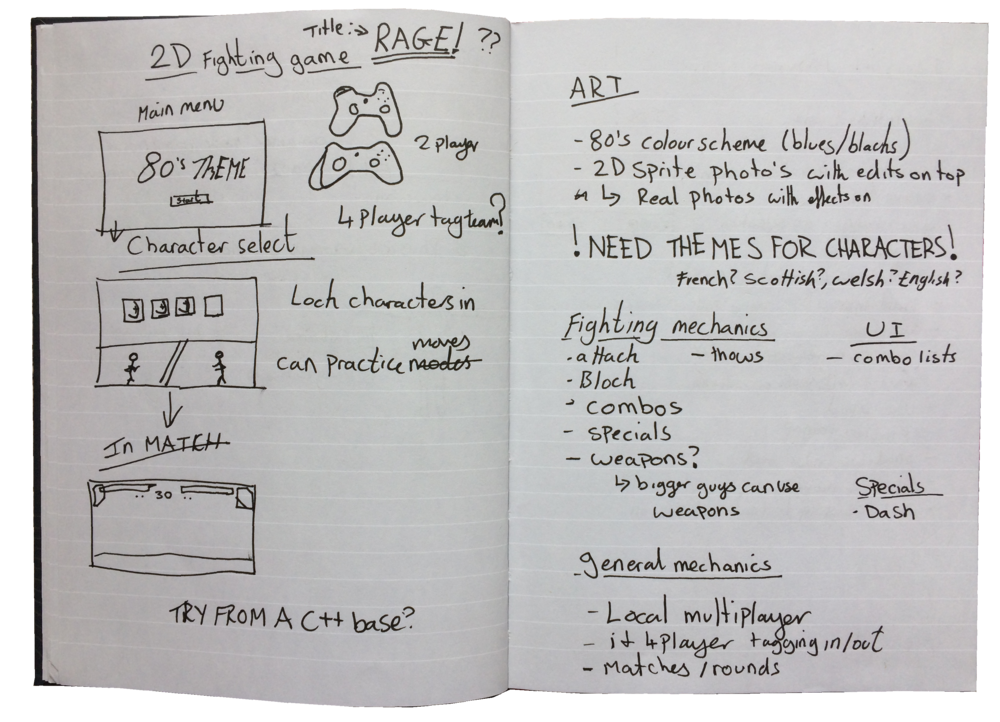
MOTIVATION
The highs and the lows
Originally I planned to make Rage in my evenings over three months, keeping to my short dev cycle……but this didn’t happen. Instead, the game took close to six months due to a mix of expanding the game’s features, a time-consuming art style as well as being busy with big updates at the office. Many times I was tempted to stop working on the game; I didn’t like it anymore, it was taking too long or I wanted to start a new and exciting idea instead. However, my personal philosophy is to stick to it until the end, as finishing a game itself is a skill that needs to be worked on and now I am glad that I did push through to finish it. This tweet was posted by @GameDevLeague, while I was making Rage and sums up perfectly how I feel.

During a project, I write down all the other new ideas I have and while I continue to develop that project, a sort of game ideas natural selection happens. I end up dropping some ideas, others mature and some join together to create new ideas, leaving me with more interesting more refined ideas.
Below are gifs from the different builds I cooked off, showing the game’s progression:
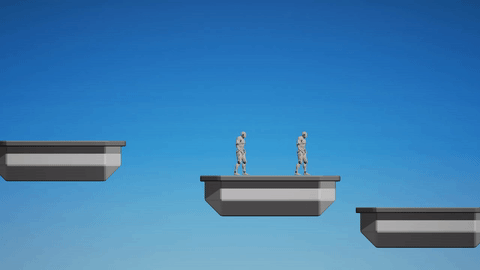
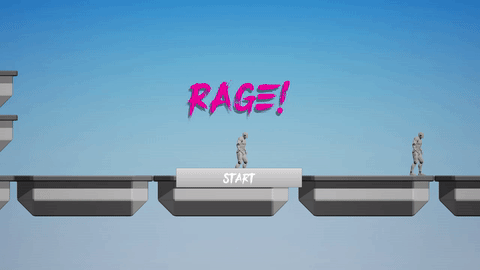
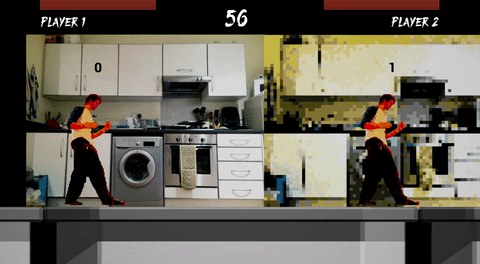
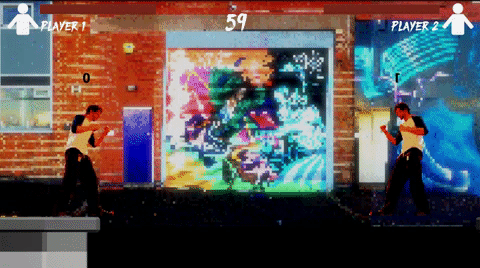
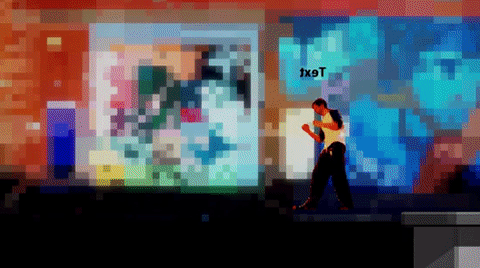
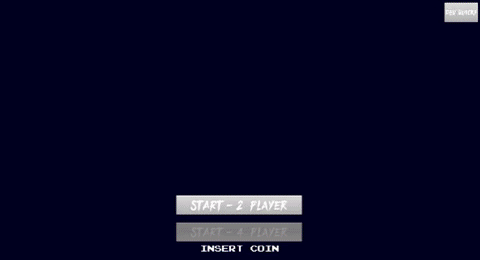



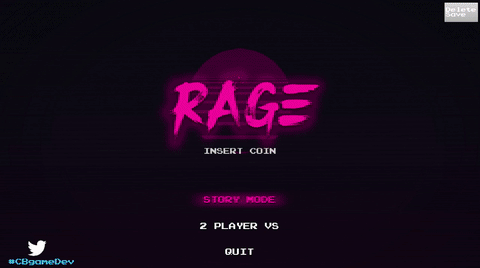
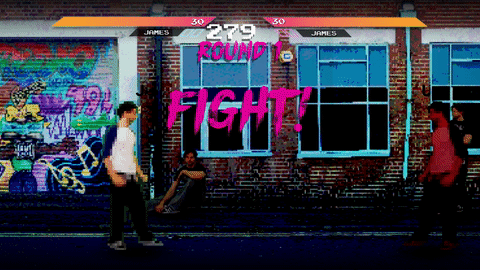
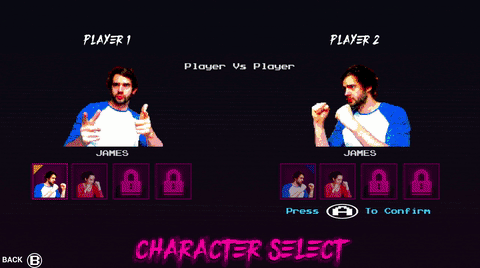
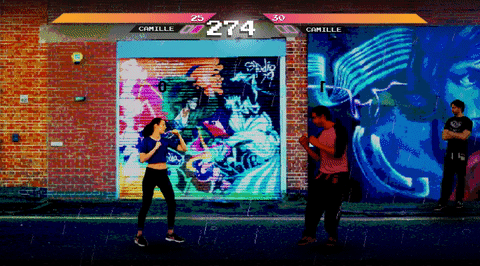
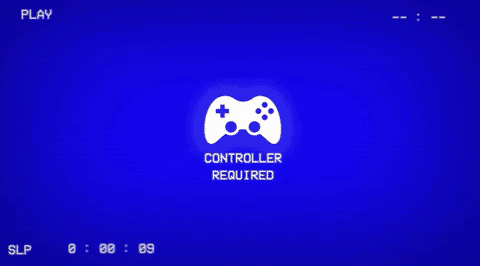
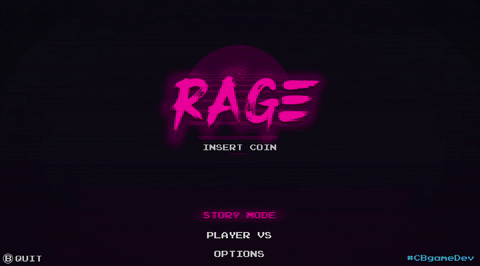
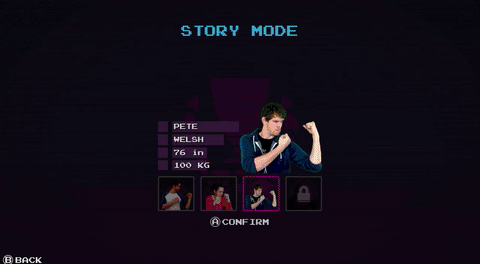
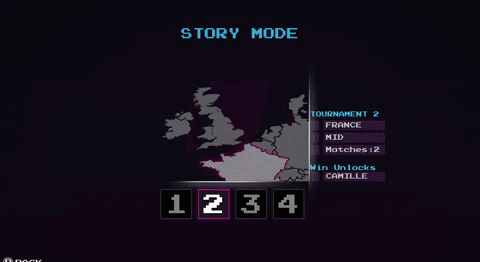
GAMEPLAY
Early on I found the video Concepts Every 2D Fighting Game Player Should Know by YouTuber GuileWinQuote. This was really useful to help me understand the mechanics of fighting games. I thought it was important to understand them if I didn’t include them all. Modern fighting games are getting more and more complex behind the scenes, they look and feel great but replicating this by myself would have taken far longer than I wanted. Instead, I chose to make the gameplay in Rage a more realistic street fighting style, no double jumps, flying or super fancy specials. This worked well with the 80’s theme and meant that it would not be too complex to develop. I thought having a single punch and kick would give too little variety to make the combat interesting. So I created a simple combo system to add a layer of complexity; with fast light attacks, normal attacks and slow heavy attacks. I carried this across to the three attack types I had; punches, kicks and crouching punches. The player also had a single special move. This took each character’s attack move count from 2 to 10, each with their own speed and damage. I talk about the technical side of this in the Code/Blueprint section later on.
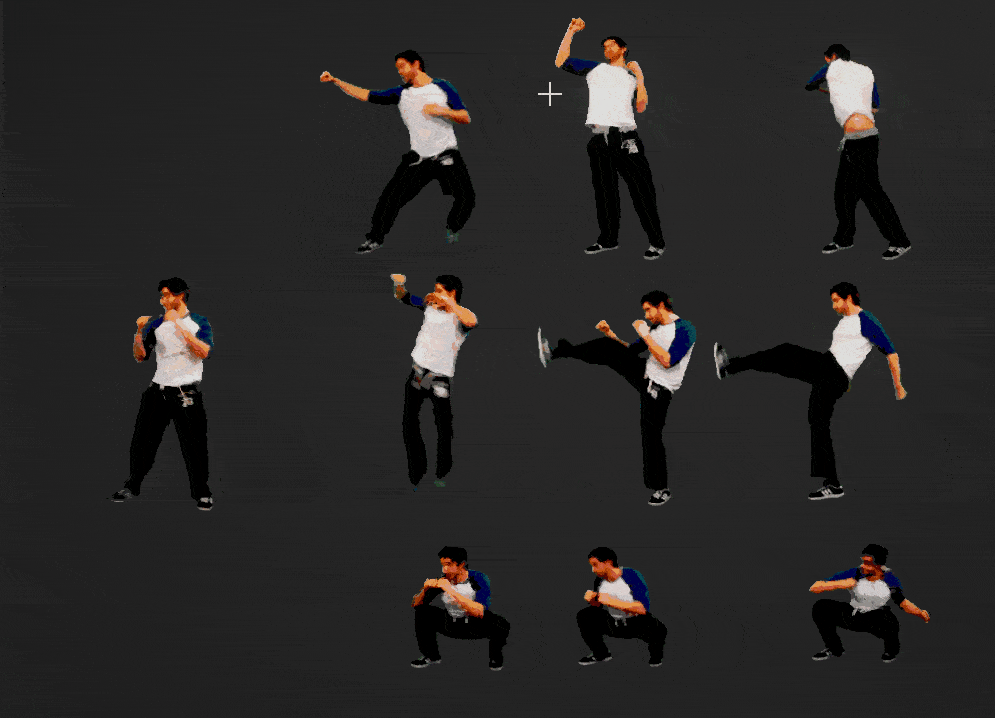
Responsiveness is key
One of the key things I learnt from making the combat was that responsiveness is key. As soon as the player touches a button the character needs to begin their attack. It is the same for when a character returns to their idle pose after a move has finished, they need to snap back quickly else it will feel unresponsive. There is little time for anticipation in the initial build up or for overlap on returning to idle. To give other players opportunities to attack, I would pause the character at the end of their swing for a fraction of time, before the return to idle begins, almost as if a cooldown. This seemed to work, making players feel as if it was their fault if they got hit, rather than the game being unresponsive.
Expanding gameplay features
Initially, I was only going to make a player Vs player game mode but early on in development it felt like some sort of overarching progression was missing, so I decided to add in a single-player tournament mode. I locked the PVP mode and all but one character, instead players would have to unlock them by completing tournaments (as Super Smash Bros does). This felt much better, giving a challenge to overcome but at the same it time increased my workload as I then needed Ai, new UI and a progress saving system.
Balancing
Balancing the game took time as there were a lot of values to play with across multiple characters. There were simple things such as health, speed as well as more fiddly elements such as the number of frames, damage and playrate for each individual move. Even small frame addition/subtraction seemed to have a big influence on responsiveness and ease of attacking. I tried to start balancing the game early on as I thought it would be a very iterative process, taking time to find good values that worked. As testing was the only real way to gauge if tweaks to values were making a positive impact on the gameplay, I tried to test/balancing each time I opened up the editor to work on the game. I would make notes then make changes and then play again with those changes. Another really useful method was to ask my friends to play it while I took a step back and made notes. This helped to not only refine the UI and flow of the game but for balancing it allowed me to see flaws in the combat; over powered/underpowered moves, dodgy collision, damage trace problems etc. For balancing the AI, I kept their health, speed and moves exactly the same as their player counterpart. Instead, I balanced them through their difficulty settings which you can read about later on.
ART
I knew I wanted to have an 80s theme from the get-go and I also thought this would be a great opportunity to try using photos/images of my friends and treating them in photoshop to create 2D characters sprites (a style I had wanted to try for a while). This also allowed me to play with a slightly choppy animation style. When first thinking about the art of the game, I gathered a few images to use as key reference. This art summed up the direction that I wanted to go, in terms of colour palette, shape language etc, which you can see below:

General game look
Initially, I placeholdered all art (from characters to UI) while concentrating on the game mechanics. However, when the mechanics were more solidified, I returned to thinking about the visuals. I decided to make a style sheet and a visual gameplay mockup to help keep/consolidate the art direction that I wanted to follow. After gathering more reference images I set about trying to create something. I found this tough, especially the colour choices (as I’m colourblind), but I pulled something together which I thought would work well. This is the first time on a personal project I did this and it really helped, especially later on when it came to adding new unplanned UI elements. I will definitely do this from now on as soon as I know the game mechanics will work. Below are the style sheet and the gameplay mockup:



































